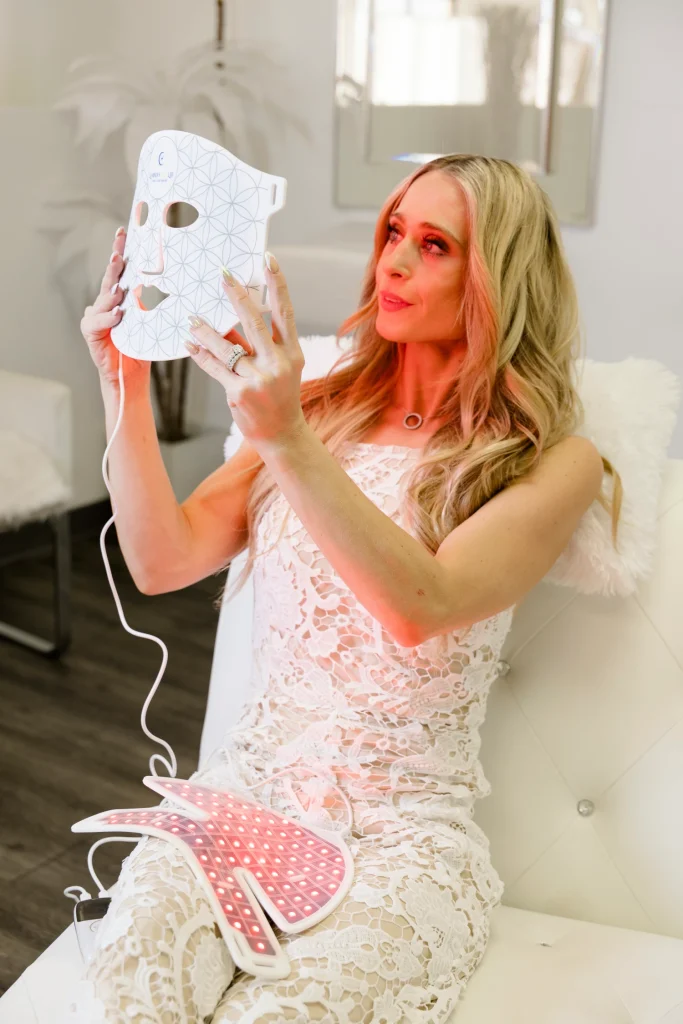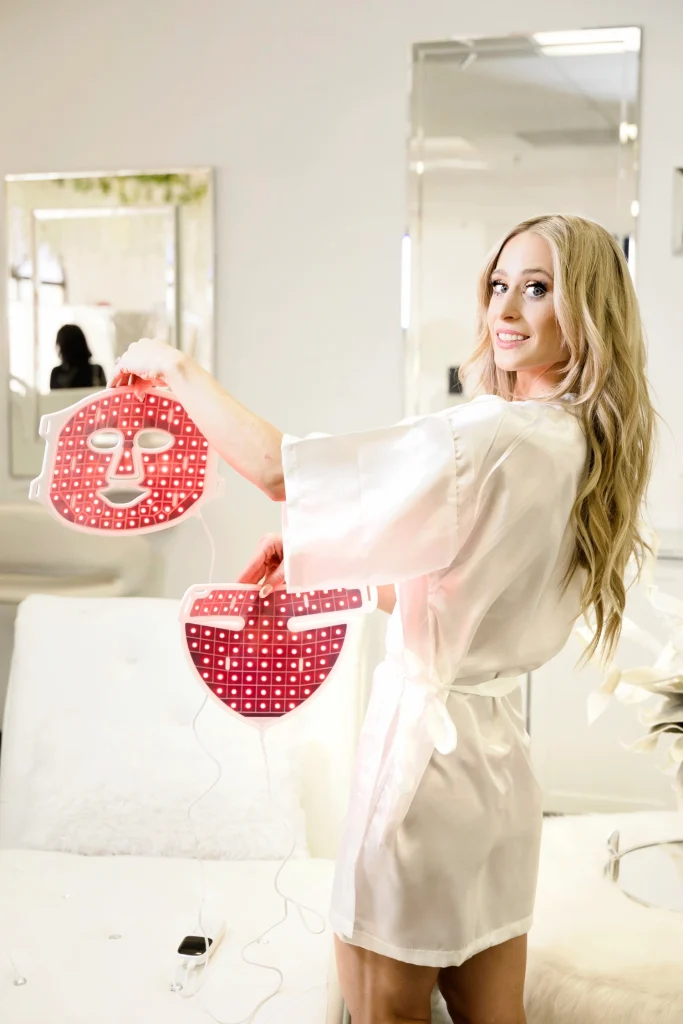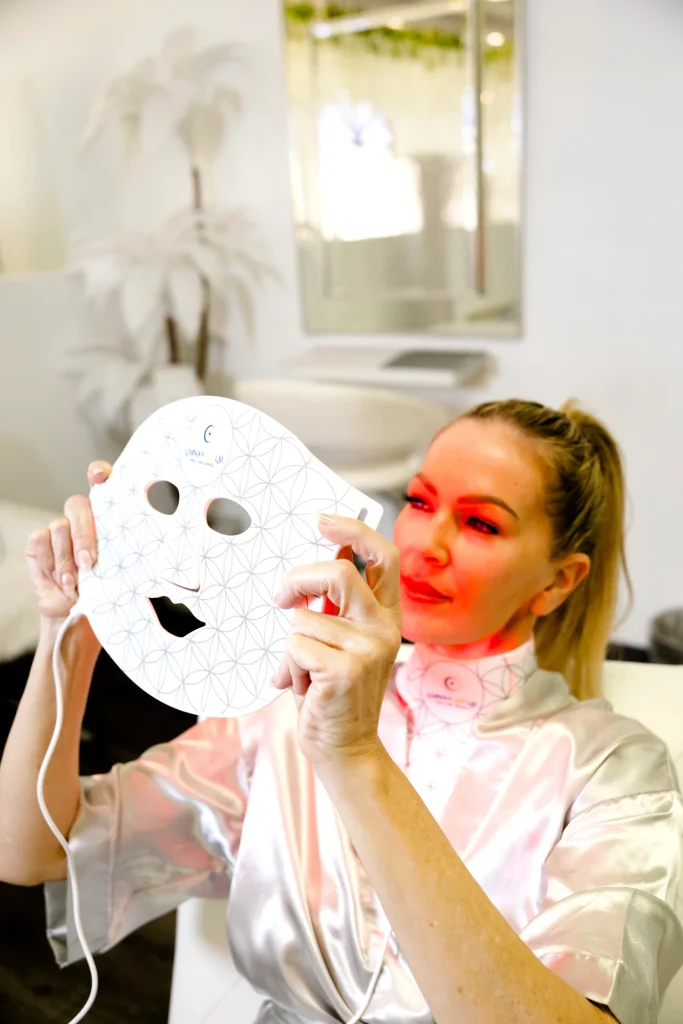Many people try red light therapy and expect quick changes, yet end up disappointed when results are minimal. The issue rarely lies in the device itself — it often comes down to small but common mistakes. Using the mask too often, skipping skin prep, or setting the wrong mode can limit progress and even cause irritation.
So, can you overuse red light therapy? Yes. Too much exposure or poor care before each session can leave the skin dry or sensitive instead of bright and smooth. Here are the main mistakes that block results and red light therapy tips to fix them for calm, clear, and healthy skin.
Misunderstanding Session Frequency and Timing
A proper red light therapy routine is most effective when approached with structure. The goal is to give your skin steady light exposure that supports renewal. Don’t try to push it past its limits. It won’t do you any good.
Each treatment builds on the last one. Results come from regular use, not long marathons under the light. Missed weeks disrupt your rhythm, while daily overexposure strains your skin rather than supports it.
For most users, the ideal balance is 3–5 sessions each week, for 10–20 minutes per session, as recommended by skin health experts from the Cleveland Clinic and supported by research in the Journal of Photobiomodulation. That routine will keep your energy levels safe and allow collagen to strengthen gradually.
Thanks to the FDA-cleared red light mask, you can make the whole process easy through pre-programmed timing options. Each mode provides safe exposure and prevents overuse, so you can relax without worrying about session duration.
| Skin Goal | Frequency | Session Length | Expected Results |
| Anti-aging | 3-5x weekly | 15-20 min | Firmer, smoother skin in 8–12 weeks |
| Acne | 4-5x weekly | 10-15 min | Fewer breakouts in 3–6 weeks |
| Tone and Glow | 3x weekly | 10 min | Brighter complexion in 4–8 weeks |
Can You Overuse Red Light Therapy?
It is possible, and it can happen without you realizing it. Some assume that daily use for long periods will double the results. However, this isn’t the case.
Red light therapy dangers from overuse may include skin feeling tight, dry, or slightly irritated. These signs show that the cells had too much stimulation, so you’ll need some recovery time.
While these red light therapy risks don’t cause permanent harm, they can slow progress.
Here are a few tips to stay on track:
- Stick to the schedule. A few sessions per week (not every day) give your skin time to renew naturally.
- Follow device guidelines. The ILUMILUX mask is set to stay within safe, effective energy levels.
- Keep sessions short. Ten to twenty minutes is enough. Longer sessions don’t give better results — just more strain.
- Watch for dryness, tightness, or redness. If your skin feels off, take a day or two off.
- Don’t double up. Using the mask more than once in a day won’t help — it just makes your skin work harder to recover.
- Skip harsh products before use. Avoid retinoids, acids, or exfoliants that can make your skin more reactive under light.
- Hydrate after your session. A calming serum or light moisturizer helps your skin bounce back and hold onto that glow.
- Trust the process. Red light therapy works best over time — steady, small doses add up to real results.
- Follow device guidelines. The ILUMILUX mask is set to stay within safe, effective energy levels.
- Keep sessions short. Ten to twenty minutes is enough. Longer sessions don’t give better results — just more strain.
- Watch for dryness, tightness, or redness. If your skin feels off, take a day or two off.
- Don’t double up. Using the mask more than once in a day won’t help — it just makes your skin work harder to recover.
- Skip harsh products before use. Avoid retinoids, acids, or exfoliants that can make your skin more reactive under light.
- Hydrate after your session. A calming serum or light moisturizer helps your skin bounce back and hold onto that glow.
- Trust the process. Red light therapy at home works best over time — steady, small doses add up to real results.
With the right schedule and a reliable LED red light face mask like ILUMILUX, you’ll be surprised with the results. You can expect a smoother tone, even texture, and skin that feels stronger every week.
Skipping Skin Preparation and Aftercare
Red light therapy at home works best when your skin is ready for it. If you skip prep, the light won’t be able to reach deep enough to do its job.
Makeup, sunscreen, or a thick layer of moisturizer can actually block the light from getting through, which is a big no-no. That’s why it’s important to take a minute to prepare properly before each session.
Before you start the treatment with a LED device for skincare preparation, make sure to:
- Wash your face with a gentle, non-stripping cleanser.
- Pat your skin completely dry — ensure there’s no residual moisture.
- Avoid applying makeup, sunscreen, or heavy creams.
- Skip exfoliants, AHAs, BHAs, and retinol for the day, as these can make your skin too sensitive.
After treatment, do the following:
- Use a lightweight, hydrating serum or moisturizer. Hyaluronic acid is a safe choice.
- Apply SPF if you go outside afterward.
- Keep your routine simple for the next few hours — no harsh products or scrubs.
If you closely follow all these steps, you can expect to get better light contact, and good aftercare locks in that glow.
The ILUMILUX FDA-cleared red light mask makes this process effortless. Its soft design sits evenly on your face without pressure or heat, so your skin stays balanced and calm after every session.
Should I Wash My Face Before Using Red Light Therapy?
Yes — always start with a clean face. A quick wash will do much more for you than just freshen your skin. It will also remove anything that could block the light or trigger irritation. Even invisible layers of oil or SPF can scatter the light and cut down its power.
Avoid toner, exfoliants, or strong active products before each session. This is because red light therapy already energizes your skin, so extra actives can push it too far.
After completing your LED session, apply a hydrating serum or soothing cream to maximize the benefits. Now you know how to use LED mask correctly.
Using Low-Quality or Unverified Devices
Not all red light therapy masks are created equal. Some may look sleek or promise “instant glow,” but you need to clearly understand what’s inside the device. It matters a lot more than how it looks.
A low-cost or unverified mask can actually hold you back. In the worst-case scenario, it may even irritate your skin. Cheap devices often skip testing and use weak or unstable LEDs. The light may flicker, shift wavelengths, or even give off unnecessary heat.
You should avoid that kind of instability. It can cause redness, uneven results, or mild discomfort around the eyes.
A proper red light therapy mask needs precision. The light must stay consistent, cool, and within a specific wavelength range to trigger collagen renewal and improve tone.
Here are a few quick signs that a device may not be worth your time:
- No clear brand name or support contact;
- Vague claims without any testing data;
- Visible flicker or uneven brightness;
- Plastic that heats up after a few minutes;
- No mention of medical-grade components.
Only buy from reliable brands. This way, you can be sure that your device will perform as intended.
Why Is FDA Clearance Important for Red Light Therapy Masks?
When it comes to red light therapy safety, FDA clearance is the safety stamp that separates the tested from the guessed. Essentially, it means a mask was evaluated for design, light behavior, and energy limits – all before it hits your skin.
To verify a device’s legitimacy, you can search the FDA Medical Device Database for its 510(k) premarket notification details.
Uncleared LED red light therapy masks can emit unstable or poorly calibrated light that can lead to negative effects.
FDA clearance eliminates that risk. It confirms three things:
- The light output is safe and controlled. The device won’t overheat or expose you to harmful radiation.
- The energy level is non-thermal. That means the light activates skin cells without creating heat damage.
- The wavelength is verified. Only specific light ranges (630-660nm and 850nm) are clinically proven to support collagen renewal and healing.
Choosing an FDA-cleared red light mask also means the brand follows manufacturing and quality standards. You know the device was tested in real life, not just marketed with big claims.
Institutions like the Cleveland Clinic emphasize that while red light therapy is emerging and backed by some evidence for skin rejuvenation, opting for cleared devices helps minimize risks. When you’re deciding on a mask, look for:
- A visible FDA registration number or database listing;
- Clear mention of red and infrared wavelengths;
- A warranty and return policy — both signs of responsible manufacturing.
The LED red light therapy masks from ILUMILUX are the best of the bunch. It has 680 medical-grade LEDs evenly distributed across the face and neck for full light coverage. Each device maintains a stable wavelength output, delivering visible results without heat or strain. With that kind of reliability, you can focus on progress.
Conclusion — Safe Light, Optimal Outcomes
Red light therapy really only works if you treat it like a long-term skincare strategy. The results are always much stronger when you have a proper red light therapy routine of consistent sessions going on. The skin just doesn’t respond all that well to one-off treatments or trying to cram all your sessions into a weekend.
What you do before and after each session makes a lot more difference than most people give it credit for. Taking the time to start each session off with clean skin is crucial because you’re letting the light get right down to where it can really do some good. And then taking care of your skin afterwards, so it can recover properly, is just as important.
Of course, the equipment you use matters just as much as how often you use it. If you’re using a device that’s been cleared for safety, you can be sure that every treatment you give yourself is going to be safe and within the right range. That takes a load off your mind, and makes it a lot easier to stick to a proper routine – which is exactly what the ILUMILUX by Luminous Skin Lab was designed to help you do.
With LED red light therapy masks, you can confidently embrace red light therapy at home and see steady progress toward a radiant complexion.
FAQ
Yes, you can use it daily. Just stick to short sessions — around 10 to 20 minutes — and make sure you’re using an FDA-cleared device so it’s safe and effective.
No, don’t apply anything before. Just make sure your skin is clean. After the session, you can follow up with your regular moisturizer or skincare.
No, makeup blocks the light from getting into your skin. You’ll need a clean face for it to actually work.
Not at all. It uses soft, non-heating LED lights. You won’t feel any pain, burning, or heat — it’s super gentle.
Not right before a session. Retinol, AHAs, and BHAs can make your skin more sensitive to light. Use them on non-therapy days instead.
No, red light therapy does the opposite. It helps boost collagen, which can make skin firmer and more resilient.
Totally fine — actually, some people find it calming post-gym. Just make sure that your skin is clean and not sweaty.
Just wipe it down with a soft, slightly damp cloth after each use. Don’t soak it or use harsh cleaners.
Yes — specific red and near-infrared wavelengths have been shown to stimulate hair follicles and improve circulation on the scalp.


